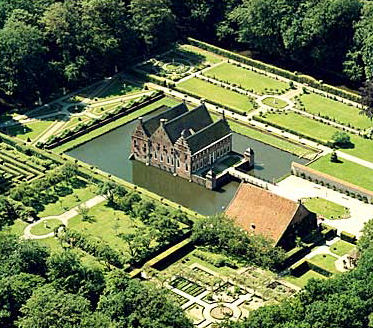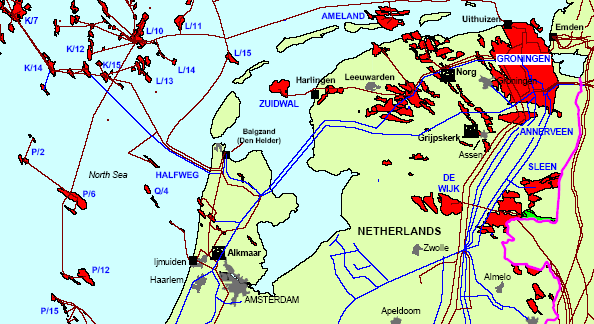| . Menkemaborg . A Uithuizen Museum . A must in Uithuizen is to see the Menkemaborg. This building was originally a small house of stone, which was enlarged several times. When you enter this mansion you will see how the noble men lived in the 17th and 18th century. |
 |
The moats, gardens and carriage drive are still in the same shape as centuries ago. In the high trees on this ground you will find lots of nests of herons. On the eastside of the mansion there is a so called pike-pool, a wide canal with at the end a small pool. In this water the fish were breed. In the mansion you can see a drawing-room for women, a hall, a reading-room, a sleeping-room, a dining-room and a kitchen.
The garden is an authentic Dutch Barok-garden with straight paths, trimmed hedges and boxwood and is created by means of the original garden-plan from 1705. The pleasure garden in front of the summer-house with gateways and half domes is worthwile seeing. At the eastside of the mansion you will find the vegetable-garden. In the orchard apple- and pear-trees can be found. There is also a labyrinth in the garden. The beautifull rosegarden is still flowering each year. The Schathuis near the mansion is used as a pancake-restaurant.
In the Groninger Week the Menkemaborg is one night illuminated with candles. The sphere is fairy-like and you will be welcomed by footmen in appropriate clothes.
In front of the Menkemaborg the Museum 1939-1945 (Dingeweg
1) is
established. This museum deals with the deliberation of world war II.
In the museum you can see a legendaric jeep, an English para-bike, an
American scooter for parachutists, a shermantank, a ‘bren’carrier,
star- and V-motors, a unique Rolls Royce motor, tapping-machinery,
machine-pistols, rocket launchers and a lot of utensils from war. You
will also find a shirt of parachute-textile fabric and substitutes of
tobacco and clay-soap. Do you know that an amphibian tank can sail as
well as drive? You can see one in this museum.
You can find corn- and peeling-mill ‘De Jonge Jan’, which can be translated in English as ‘the young Ian’ in the Mennonietenkerkstraat no. 15. This mill was called in former times ‘De Liefde’, which means ‘Love’. The mill can be visited by appointment.
If you are intersted in needlework you can visit the Kantmuseum (Oude Dijk 7), in which you can see how lace is made.
When you like to stay the night in Uithuizen, you can
sleep in ‘Het
Gemeentehuis’ (Hoofdstraat Oost 16). This hotel was built in 1865 and
restaurated in autentic style in 1995. For a real Austrian meal you can
have dinner in the Austrian specialty restaurant Gasthof ‘De Unie’. You
will be served in authentic Austrian costume. The flamboyant dinner
will be chaperoned by Austrian knights, noble men an noble ladies.
View images of museum by Akfred Saak in year 2000
| Point of interest MAJOR NATURAL GAS PIPE LINES |
 Established
in 1973 to transport gas
from the offshore L10 block,
Noordgastransport B.V. owns a major natural gas transmission pipeline
system in the Dutch North Sea. The company also owns the onshore gas
treatment plant at Uithuizen, where natural gas liquids are extracted
from the gas stream, and a nearby railcar loading facility.
|